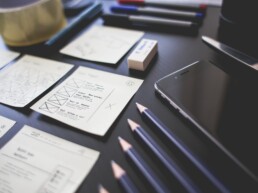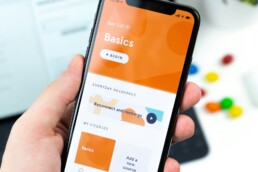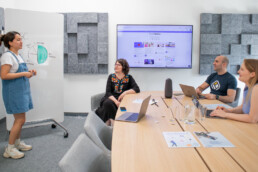- Home
- Collective
- Creating Stronger Project Outcomes Through an Agile Design Process
Creating Stronger Project Outcomes Through an Agile Design Process
Beyond the confines of creative briefs, project management platforms and collaborative regroups – creative teams are now looking to expand and experiment with new processes, moving far away from the traditional design project management style, hoping to crack the code in the design process reinvention.
With most creative teams working on projects ranging from campaign strategy, UI/UX to content development, an agile process lends itself to an elastic, fluid journey to the end product.
What is Agile?
Though derived from software development, the agile method has proven effective in multiple sectors of business and product development, particularly in creative environments. Agile is a functional strategy aimed at producing solutions in a short amount of time by using incremental repetition. In other words, constant collaboration, or sprints – in this case. Close contact and transparency is key with the client to keep the stream moving rapidly. Nearly 100% of teams who have implemented agile say it has helped communication on specific projects, delivering an end product faster.
Coordinating an Agile Approach
The research, design/development, marketing, and customer support teams all need to be in constant conversation so that they know what needs to be done. Then, the information must be structured in a way that allows all the teams to play their respective roles to improve on the product in an organized way whether it’s changing the graphic design or fixing various bugs. For many companies, the agile approach is a constantly regenerating process.
Get The Whole Team on Board
The research, design/development, marketing, and customer support teams all need to be in constant conversation so that they know what needs to be done. Then, the information must be structured in a way that allows all the teams to play their respective roles to improve on the product in an organized way whether it’s changing the graphic design or fixing various bugs. For many companies, the agile approach is a constantly regenerating process.
Many traditional design processes tend to silo the phases of a project, leaving only the polished outcomes for the client to see. Through the implementation of the agile design, it’s important to involve all stakeholders at each phase of the project to gain important insights that can drive an optimized final product. Each member of the team from design, content, client to development have valuable skill sets to bring to the table, increasing the effective nature of the design process. With this method of continual development, problems, and/or stuck spots can be handled in a seamless manner with the team adjusting as they go, avoiding major setbacks or project delays.
Implement the Process Daily
Through regular communication and optimization, the agile design process becomes second nature. By compartmentalizing specific problems or sections of a project, a team can truly hone in on a solution, even meeting several times a day for a quick huddle to problem solve. The agile process becomes much less cumbersome than sitting down to a long-winded meeting to run through many aspects with stakeholders who may not have insight into that portion of the project. The application of ‘sprint cycles’, ‘huddles’, and other rituals bring investment to the process that improves the final result and forms positive cultural habits.
While an agile process is ideal for smaller teams and specialized projects that require continual optimization, it can also be applied to a companywide implementation. When working with larger projects such as e-commerce, an agile process may be applied to portions of the project that need greater attention to specific details.
Elevating Web Design from Average to Exceptional
In the digital age, a website serves as the cornerstone of a brand's online presence, often acting as the first point of contact with potential customers. While an average web design might fulfill basic needs, transforming it into a highly…
Unlocking The Invisible Power of UX-Led Processes
UX-led refers to an approach where user experience is the primary driving force behind the design and development of products and services, ensuring that every aspect is crafted with the end-user’s needs, behaviors, and satisfaction in mind.…
In-House UI/UX Design vs. Hiring an Agency
The decision between an in-house UI/UX design team and hiring an agency does not have a one-size-fits-all answer. It depends on various factors, including project complexity, budget constraints, strategic goals, and the need for innovation.…



